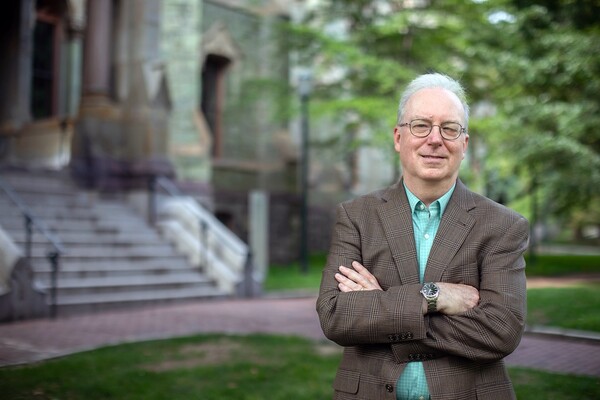
nocred
Seven hundred years after the Native American cliff dwellings now in Mesa Verde National Park were abandoned, they were showing signs of decay — plaster peeling, walls deteriorating.
The challenge was to preserve what was left, using all-natural materials — a requirement of the Native American tribes of the Southwest, who venerate the early pueblo dwellings in southwestern Colorado as a sacred ancestral site.
Frank Matero, chairman of the Graduate Program in Historic Preservation, has been working with teams of graduate students since 1993 on preserving the site.
Matero spends his time at Mesa Verde, living in an Airstream trailer on park grounds which were first settled in 700 A.D.
“There are no other cliff dwellings like these,” Matero said. “These are small cities tucked under the alcoves, all made of stone. It’s the apex of Southwestern pueblo culture.”
This past summer, the last year of his grant from the U.S. government’s Save America’s Treasures Program, he and a team of eight students, who lived in a house outside the park, worked on the Cliff Palace, the largest and most famous of the cliff dwellings.
The National Park Service has invited him to continue his preservation work next year at Spruce Tree House, the best preserved of Mesa Verde’s cliff dwellings.
“We are primarily focusing on the preservation of the plasters and the more sensitive masonry that is at the time in its life when it is beginning to fail,” Matero said. “The Park Service had no research for the conservation.”
But the steps to be taken had to respect the beliefs of the tribal representatives who counseled the Park Service.
“What we do is take on a problem for which there is no solution,” said Matero. In the course of researching and testing all-natural materials, Matero and the Historic Preservation graduate students have been able to refine older preservation techniques that had been abandoned for new, man-made materials.
For example, to glue old plaster back to walls, the team is injecting Knox gelatin mixed with glycerin to make it flexible. They have figured out a way to preserve and reattach the colored plasters without staining them, using a man-made product that serves as a protective barrier that then sublimes into the air.
The processes they are following are not the same as restoration, which returns architectural sites to their original look.
Matero observed that Mesa Verde had escaped the kind of restoration in fashion when the park was created under the Antiquities Act of 1906. “The government and the park professionals showed incredible restraint at not reconstructing the site,” Matero said. He attributed the site’s good condition to weather conditions, its architecture, and the fact that it remained undiscovered and therefore undisturbed by white settlers and ranchers through the 1870s.
The team has been analyzing the materials already there, monitoring the microclimates, and using digital technology to record conditions and the architectural features. “We use [the digital information] as a roadmap for conservation intervention.”
Matero said he was struck by the site’s sacred qualities. “It’s a living ancestral site for Native Americans today. …There are days we don’t talk [because of the sacredness of the site]. Second, it’s a site of great beauty.
“Most of the features we’re working in are kivas. It’s like working in a church or a mosque or a synagogue.”

nocred

Image: fcafotodigital via Getty Images

Image: Mininyx Doodle via Getty Images

Charles Kane, Christopher H. Browne Distinguished Professor of Physics at Penn’s School of Arts & Sciences.
(Image: Brooke Sietinsons)